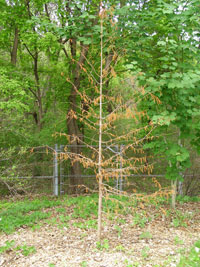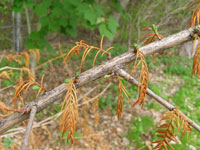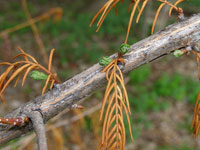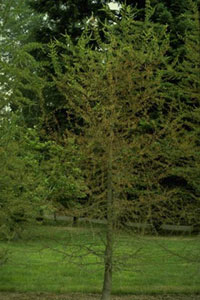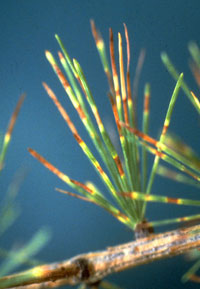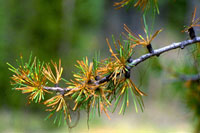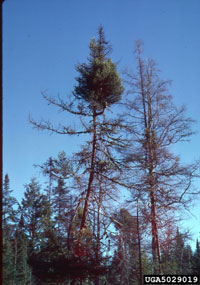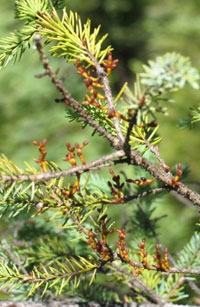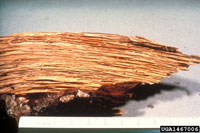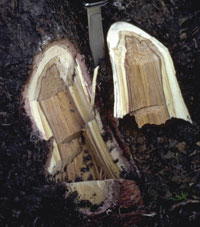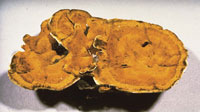Extension > Garden > Diagnose a problem > What's wrong with my plant? > Evergreen Trees and Shrubs > Larch / Tamarack >Needles missing
Larch / Tamarack > Needles fall off / needles missing
1 of 4
Fall Needle drop
- Deciduous needles turn yellow and fall off in autumn
- Not insect or disease related, normal for larch trees
- New needles emerge in spring
2 of 4
Larch needle cast
Meria laricis
- First see yellow spots or bands on needles that turn reddish brown
- Next entire needles turn yellow than reddish brown and fall off
- Disease appears suddenly in wet spring weather
- Not serious in mature trees but can kill seedlings
- Currently found in WI, status in MN unknown
- More information on Larch needle cast
3 of 4
Eastern dwarf mistletoe
Arceuthobium pusillum
- Witches’ brooms, a clump of small weak branches arising from one point on a larger branch, form in infected trees
- Needles within the witches’ broom remain green, needles on the rest of the tree yellow and fall off, typically from the top of the tree down
- Short (1/2 to 1 inch) brown to orange dwarf mistletoe stalks can be seen during the growing season but fall off after seed dispersal in August or September; this occurs only after 4 to 5 years of infection
- Common only on tamarack near infected black spruce in northern Minnesota
- More information on Eastern dwarf mistletoe
4 of 4
Tomentosus root rot
Onnia tomentosa
- Heartwood of infected roots and trunks is initially reddish brown
- As infection continues white pocket rot develops; decayed wood has elongated pockets or pits, and may appear honeycomb-like in cross section
- Infected trees have reduced growth and thin canopies, produce large amounts of cones and eventually die
- Infected trees frequently break or lodge during storms
- Mushrooms that are velvety brown above and porous and buff colored below appear around the base of the tree in late summer
- More information on Tomentosus root rot



